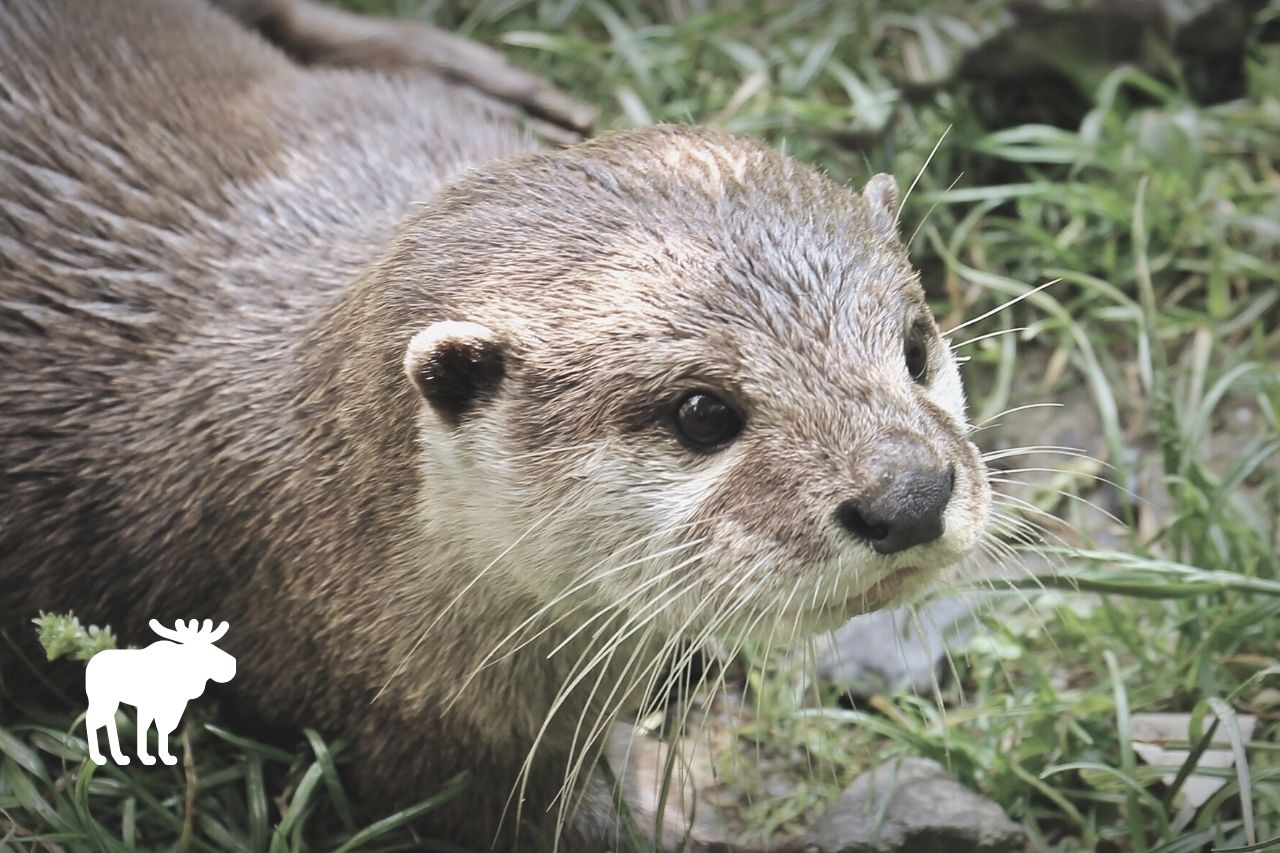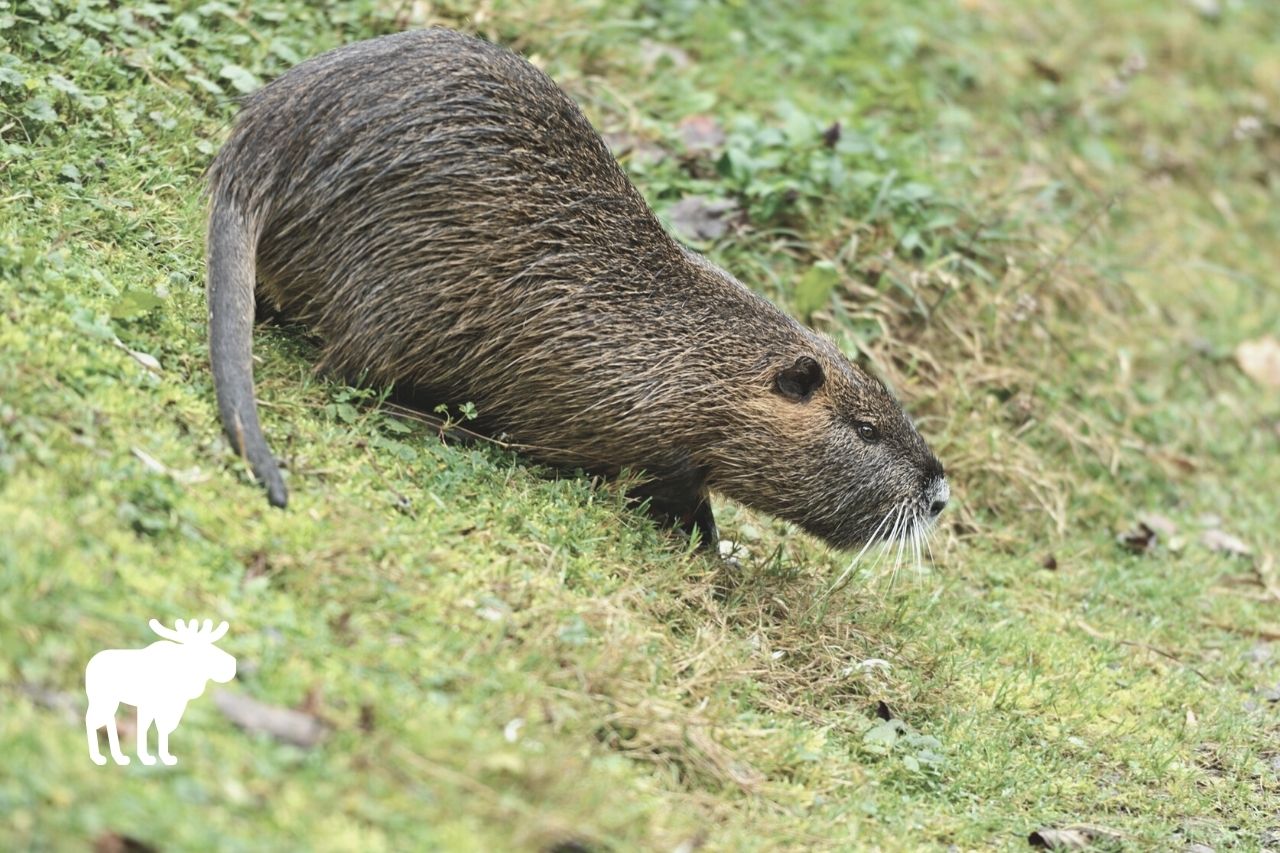If you have a pond on your property or live near a body of water, you may begin to notice signs of wildlife living near the water. But is that creature you only caught a glimpse of an otter, a beaver, or something else? What is the difference between an otter and a beaver, and what are some of the ways you can tell them apart? Keep reading to find out more!
What You'll Learn Today
Otter Vs. Beaver Vs. Muskrat

Both otters and beavers have some similarities with each other as well as with the muskrat, a related animal. If you were to see any of them from a distance, you might think they were all the same animal.
If you could get a little closer, though, you would find that they are not so difficult to tell apart after all. You just need to know what you’re looking for.
With that in mind, let’s talk about some of the physical differences between otters, beavers, and muskrats.
Otter
Otters are long, thin, and athletically built. The shape of their body gives them a sleek, streamlined appearance and, as a result, they are exceptionally fast and graceful swimmers.
An otter’s body shape is one of the easiest ways to tell it apart from beavers and muskrats, and its tail is another easy sign. Otters have long, rounded tails, and their tails are covered in short fur.
There are also ways of telling whether an otter lives in the area just by looking around the area where it lives.
Check your local pond or stream for smooth areas going from the bank into the water. These smooth areas are known as “otter slides” and are caused by the otter frequently entering and exiting the water in the same spot.
Otters may also leave behind areas of fish bones and scales because they tend to eat in the same spot over and over again. While they don’t generally cause a lot of damage to the trees and wildlife of their habitats, otters eat lots of fish and may deplete the supply from their local pond.
Lastly, otters tend to be a lot noisier than beavers and muskrats. If you hear a lot of barking-type noises that don’t sound like the neighborhood dogs, then there’s a good chance you may have otters living in your area.
Beaver
Beavers are the largest of the three animals; the average adult beaver weighs between 40 and 60 pounds. Beavers have a much rounder, less athletic shape than otters, and they don’t swim nearly as fast.
Beavers are known for the dams and lodges they build from rocks, logs, mud, and tree branches. Some of these structures can be incredibly extensive, like the one found in Alberta, Canada and discussed in the following video:
As you might imagine, beavers can cause obvious and severe tree damage. In fact, if there is a family of beavers living in your area, you will probably know it simply based on the amount of trees that have been chewed down.
Another difference between beavers and otters is that beavers are herbivores; they don’t eat fish or other animals. They will, however, eat a wide variety of other things, including tree bark, clover, grasses, water plants, and even human crops.
Muskrat

Muskrats are the smallest animal on this list; at first glance, they may appear like tiny beavers, but they only weigh about 2 to 4 pounds at maturity. Muskrats are moderate swimmers; they don’t swim as fast as otters but are generally faster than beavers.
Despite their similarity in appearance to beavers, muskrats have a much different looking tail. Whereas the beaver’s tail is horizontally flat (like a paddle), the muskrat’s tail is flattened vertically; it is also much longer and thinner, a little but like a rat’s tail.
Also unlike beavers, muskrats don’t build dams. Instead, they create burrows into the sloping banks of ponds, lakes, rivers, and other wetland areas.
According to Clemson University, if there are a lot of muskrats in an area, their burrows may weaken the bank, potentially causing it to cave in.
Do Otters Build Dams?
It’s a fairly common sight to see otters hanging out around the dams and lodges that beavers build. For this reason, it’s easy to assume that otters are actually the ones responsible for building the dams and lodges.
The truth is, otters don’t build dams, but they are perfectly happy to make use of old abandoned beaver dams. Sometimes, they don’t even wait until the beavers have moved away.
Otters may use beaver dams to escape from larger predators or as a place to sit and eat. Because beaver dams usually create areas of standing water, they may trap large numbers of fish, so the otters then have access to a plentiful food source as well as the shelter provided by the dams.
Beavers don’t seem to mind sharing their space with otters; most of the time both species tend to leave each other alone.
Do Beavers Swim Like Otters?

Beavers and otters have very different swimming styles and patterns.
For one thing, beavers swim much more slowly than otters. Their bodies are more rounded and do not move as quickly or easily through the water.
Otters tend to move like fish in the water, using their bodies and tail more than their paws. Beavers also use their bodies and tails, but they do a lot more paddling with their back feet than otters do.
That said, both beavers and otters are excellent swimmers.
Are Beavers and Otters Friends?
We’ve already discussed how otters frequently live around beaver dams and in beaver ponds. This would give the impression that, in general, beavers and otters get along pretty well.
That is true for the most part, but it might be a bit of an overstatement to say that beavers and otters are “friends.”
Beavers and otters that live in the same area have what is called a commensal relationship. This means that one of the species is benefited by the relationship, while the other one is unaffected.
Beavers are usually unaffected by the presence of otters in their territory, while the otters benefit from the shelter of beaver dams and the plentiful supply of fish. At least, this is usually the case; as with everything, there are exceptions to the rule.
Technically, otters are also considered predators of beavers, as they have been known to eat them. This happens only rarely, and typically only in cases of food shortage.
So are beavers and otters friends? Not exactly, but they do get along pretty well most of the time.
Conclusion
Beavers and otters are easy to tell apart as long as you know what you’re looking for. Otters are slimmer and move quickly through the water, while beavers are more rounded and swim more slowly.
Otters tend to leave fish bones and “otter slides” around their territory, while beavers leave chewed tree stumps and other tree damage. Both animals live near the water and are skilled swimmers. If you’re looking for more differences, check out our guide about woodchuck and beaver.
Beavers are way fatter and slower than otters. They are like the lazy or obese versions of otters haha
I think that’s offensive Dwight… I work rescuing beavers and they’re beautiful animals not obese/lazy versions of otters
How dare ya, Dwight?
Beaver are cute and they smell nicely, I know because I keep two of them as pets and they sleep in bed with me!
Are beavers often seen on land – for instance, crossing a quiet country road? Do they have a lumpy bumbling movement on land?
Any comments gratefully received.